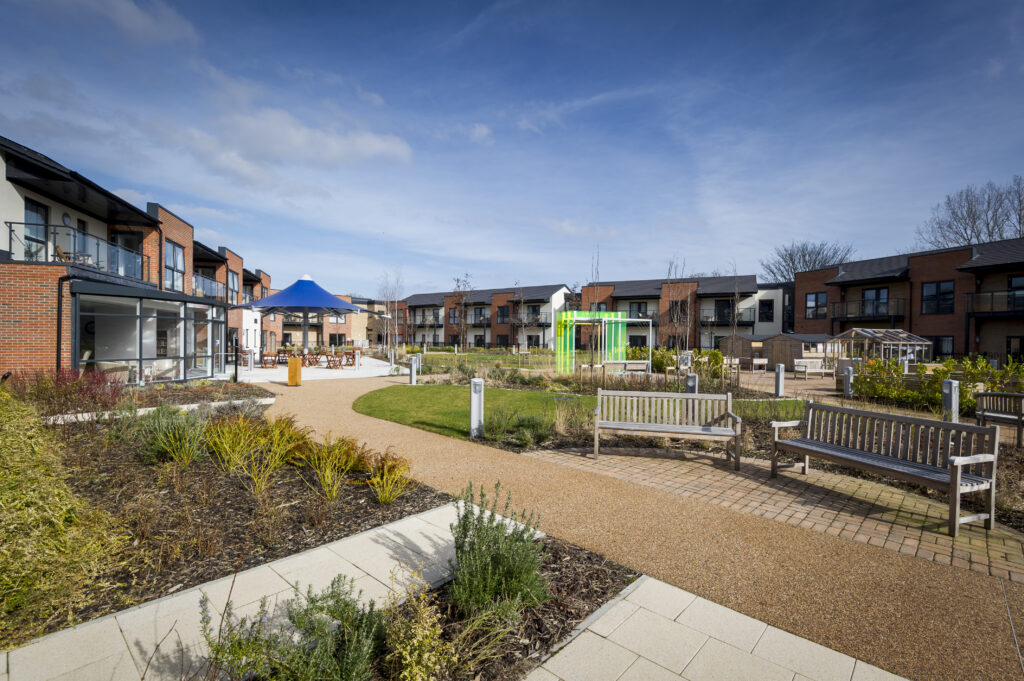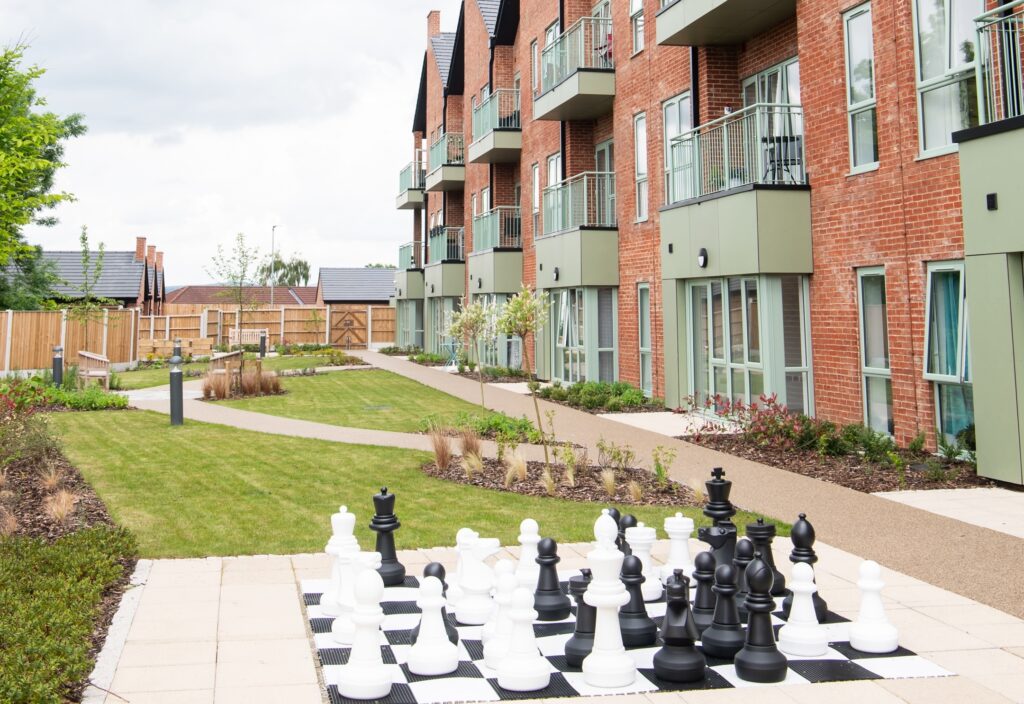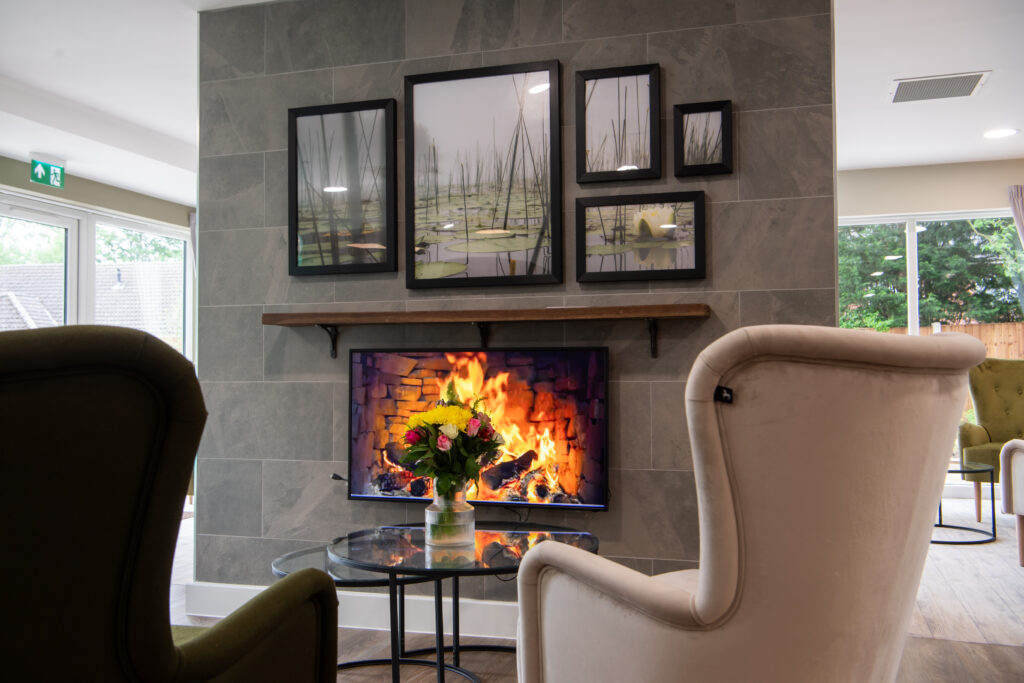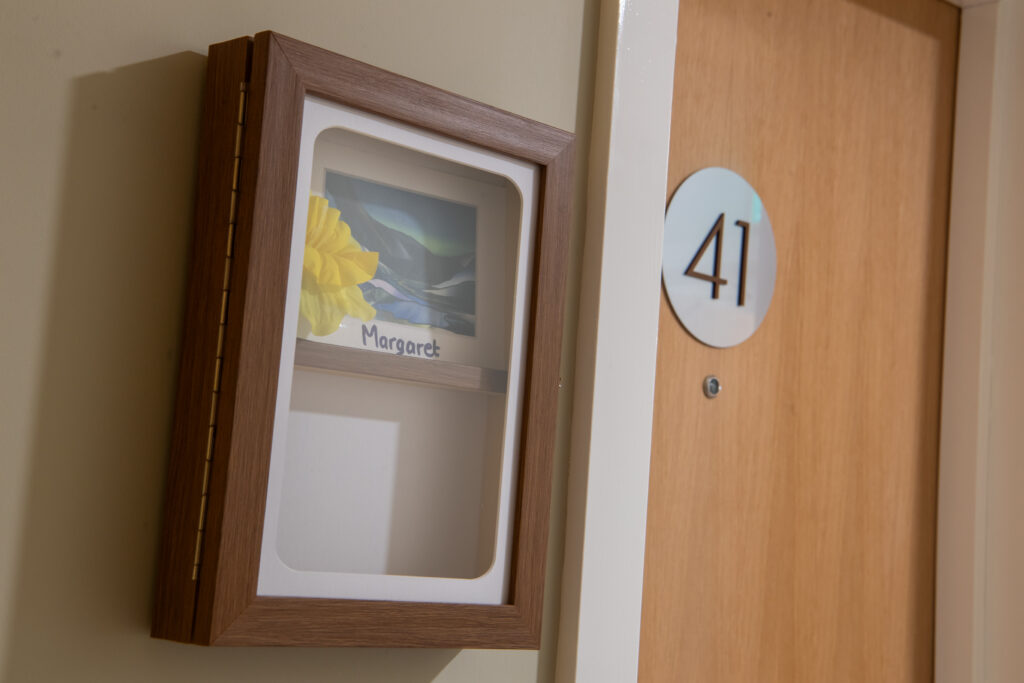As one of the largest UK housing and care providers we are committed to creating inclusive communities and providing excellent care through our extra care services. Investing in research and development to understand the long-term needs of our residents and the communities we serve to provide high-quality support.
In this blog post, during Dementia Action Awareness Week, we delve into the importance of dementia-inclusive design within extra care environments, exploring how thoughtful choices can enhance the quality of life for residents, their families and our colleagues.
Understanding dementia
Before examining the design specifics, it’s crucial to grasp the unique challenges faced by individuals living with dementia. Dementia is not merely a condition, it’s a complex set of symptoms affecting memory, cognitive function, and behaviour. For those with dementia, traditional care environments can be disorienting, overwhelming, and even frightening.
The importance of design
Designing spaces within extra care facilities with dementia in mind isn’t just about aesthetics, it’s about developing a supportive and enabling environment. By incorporating principles of dementia-inclusive design, we can create spaces that promote independence, safety, and wellbeing.
Key design considerations
- Wayfinding and orientation – Those with dementia often struggle with navigation. Clear signage, colour-coded pathways, and visual cues can help residents find their way around without feeling lost or confused.
- Sensory stimulation – Engaging the senses through elements like natural light, soothing colours, and tactile surfaces can evoke positive emotions and reduce anxiety.
- Safety features – From handrails and non-slip flooring to easily accessible emergency call systems, prioritising safety measures ensures peace of mind for residents, their families and colleagues.
- Flexibility and adaptability – Spaces should be designed to accommodate changing needs over time. This might include adjustable furniture, modular layouts, and multi-purpose rooms.
- Community integration – Encouraging social interaction and a sense of belonging is vital. Communal areas designed for group activities, communal dining spaces, and gardens can encourage connections among residents and colleagues.
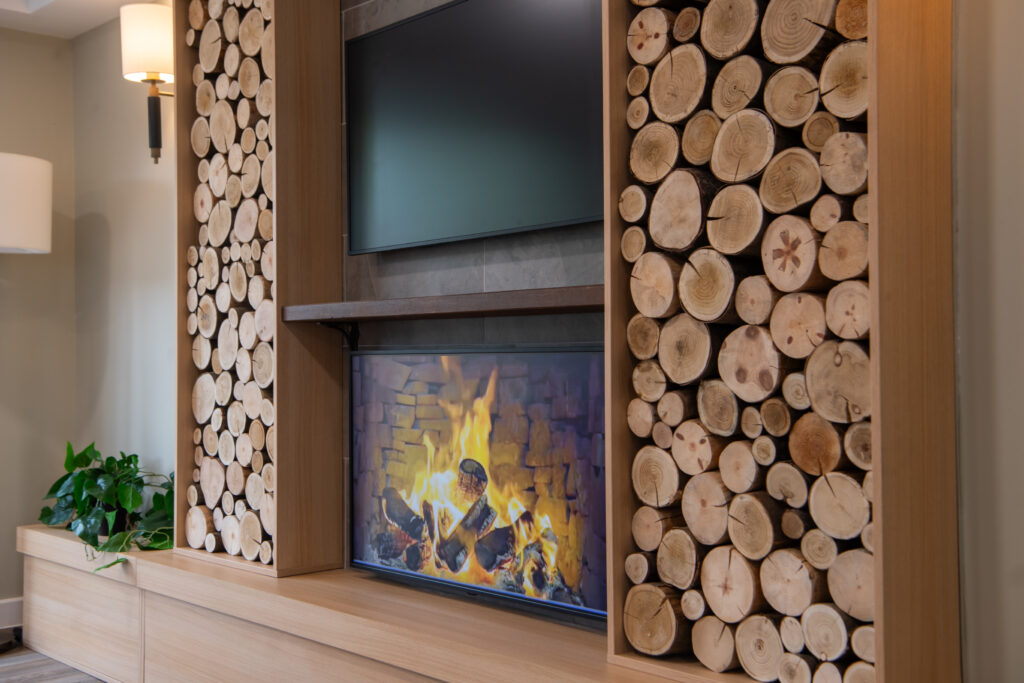
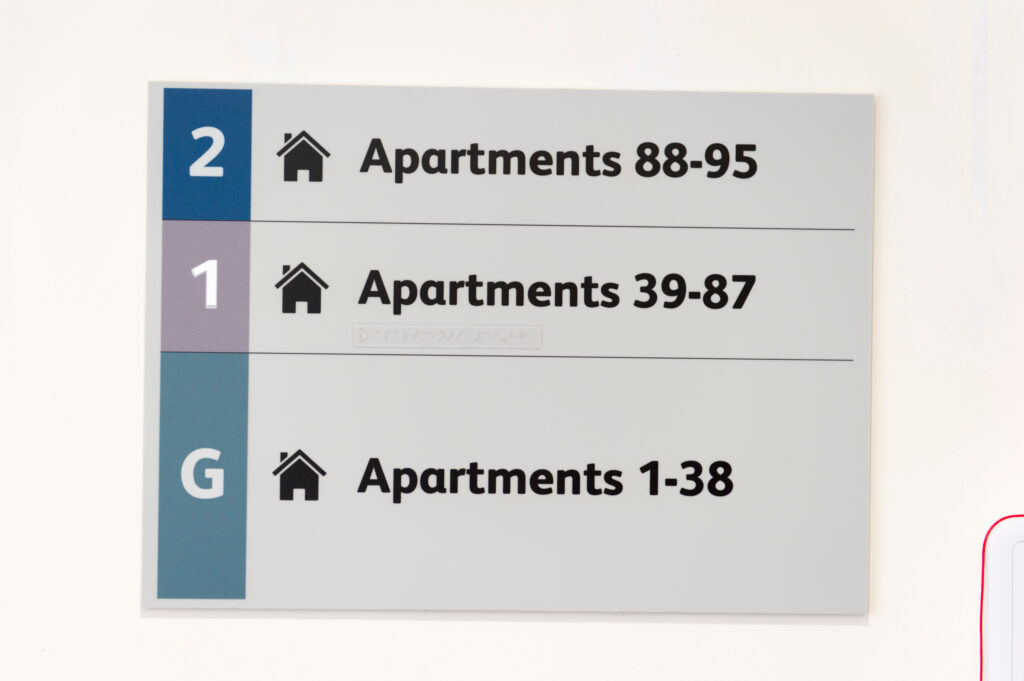
Case Study: Hull Extra Care and Keswick Gardens
To help illustrate the impact of dementia-inclusive design, we’ll take a closer look at our Hull Extra Care schemes and Keswick Gardens in Rochdale. Here, every design choice, from the layout of corridors to the selection of furnishings, is informed by a deep understanding of dementia care principles.
Hull Extra Care
We are incredibly proud that our three Hull Extra Care sites have achieved the prestigious Stirling Dementia Gold Standard accreditation! This milestone reflects our unwavering commitment to designing spaces that prioritise the comfort, safety, and wellbeing of our residents living with dementia.
Here are some of the highlights of our dementia design features:
- No ‘Dead Ends’. Internal and external spaces are carefully designed to eliminate ‘dead ends,’ ensuring continuous loops in corridors and gardens to prevent confusion and anxiety for residents.
- Colour-coded wayfinding. Each floor boasts a distinct colour scheme, making it easy for residents to find their way with corresponding signage and carpeting. From green on the ground floor to purple on the fourth, our residents can navigate with confidence.
- Themed artwork. Different themes adorn each floor’s artwork, serving as visual cues to aid navigation and evoke familiar memories. From Hull landmarks to maritime scenes, every detail is thoughtfully curated.
- Blind-covered mirrors. Retractable blinds on mirrors help prevent disorientation, providing residents with control over their reflections and minimising distress.
- Consistent toilet door colour. Blue toilet doors across all communal areas ensure consistency and recognition, regardless of the building, enhancing accessibility for residents.
- Clear signage. Pictorial and word signage on communal doors facilitate easy identification of essential areas like toilets, laundry, and more.
- Memory corners. Thoughtfully placed memory corners offer a peaceful retreat for residents, stimulating memory recall and aiding in finding their way around.
- Memory shelves. Each apartment features a unique memory shelf outside its door, assisting residents in recognising their homes and fostering a sense of familiarity.
- Carefully selected décor. From wall colours to furniture patterns, every design choice is meticulously made to create a soothing and supportive environment.
- Sensory external spaces. Our gardens are enriched with sensory features, including aromatic plants and interactive elements, promoting relaxation and engagement.
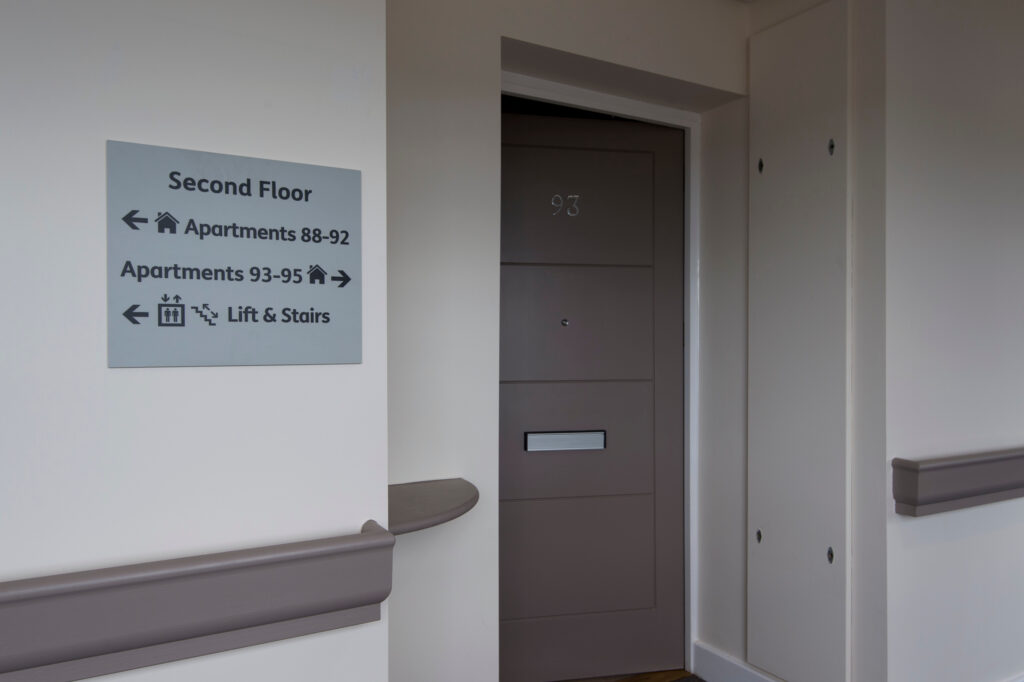
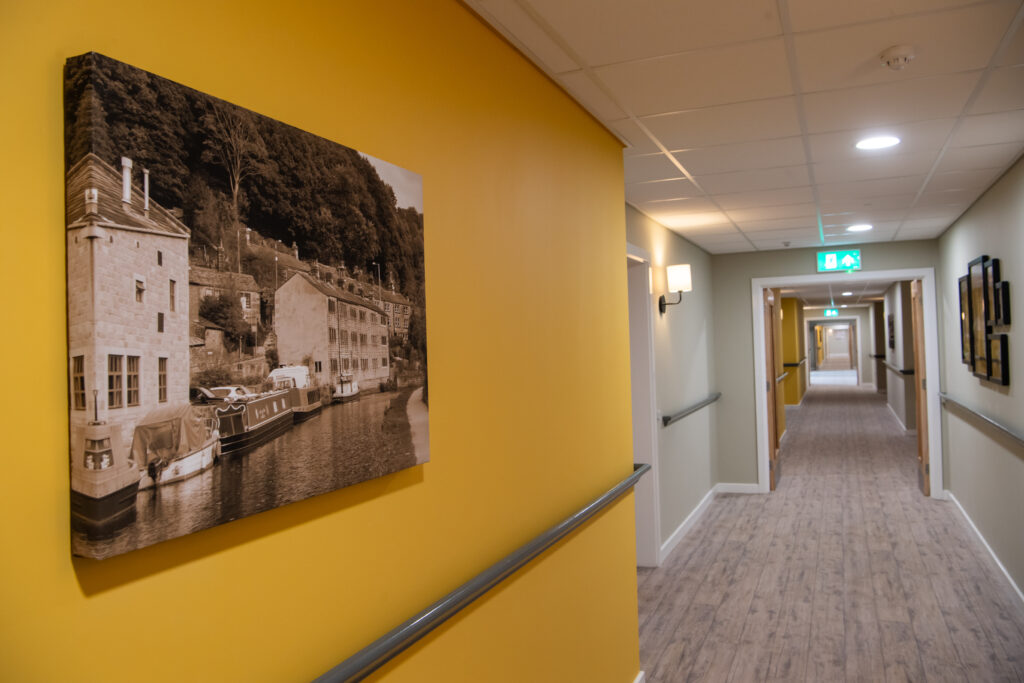
These are just a few examples of our dedication to providing exceptional care and support for our residents living with dementia. We remain committed to innovation and excellence in creating inclusive, welcoming communities for all.
Keswick Gardens
Step into Keswick Gardens and immerse yourself in a sanctuary designed with utmost care and consideration. Our commitment to creating a nurturing environment is evident in every thoughtful detail, from soothing colour schemes to engaging memory corners. Let’s explore how these features align with dementia design principles:
- Calming colour schemes. Each floor boasts a unique colour palette to promote relaxation and positivity. From tranquil greens to uplifting yellows and serene blues, our residents are surrounded by soothing colours.
- Thoughtful artwork selection. Our artwork serves as more than decorative, it acts as a source of comfort and familiarity. Every piece is chosen with residents’ wellbeing in mind.
- Memory aids and personalisation. Visual cues and personalised touches help residents feel at home and connected to their surroundings. Family photos outside apartment doors and themed memory corners spark memories and foster a sense of belonging.
- Safety and wayfinding. Non-intrusive signage and colour-coded floors ensure residents feel secure and oriented. Memory corners on each floor provide valuable support for navigation while evoking nostalgia and creativity.
- Emotional wellbeing. Exposure to nature, access to outdoor views, and cozy communal spaces contribute to residents’ overall wellbeing. Our lounge areas offer choice, autonomy, and reduced overstimulation, fostering a sense of community and comfort.
At Keswick Gardens, we’re dedicated to creating a space where residents can thrive, feel supported, and live with independence and dignity.
Conclusion
Designing extra care spaces for individuals with changing support needs requires more than just architectural expertise; it demands empathy, creativity, and a commitment to person-centred care. By embracing the principles of dementia-inclusive design, we can create environments where residents thrive, maintain dignity, independence, and a sense of belonging.
We recognise that not all residents have dementia and that some Stirling Accreditation criteria, while incredible, can be restrictive in supporting other residents so it’s crucial that our designs are flexible and adaptable to accommodate a range of support needs. Whether it’s accessibility features, sensory considerations, or simply creating environments that promote wellbeing and comfort, we’re committed to finding solutions that work for everyone.
Moving forward, we will continue to:
- Evaluate and improve – We’ll assess what we’re doing well and where we can make enhancements to better serve our residents. By listening to feedback and stay flexible to changing needs, we’ll refine our approach to create communities that truly meet the needs of all.
- Develop a blueprint for inclusivity – Our goal is to establish a blueprint that embodies inclusivity in every aspect of our design, from the layout of communal spaces to the functionality of individual homes. By prioritising inclusivity from the outset, we can ensure that our communities are welcoming and accessible to all.
- Create homes that people want – Ultimately, our aim is to create homes that people not only need but also want to live in. By combining thoughtful design, practicality, and a warm, inviting atmosphere, we’ll continue to develop spaces that residents are proud to call home.
Designing extra care spaces requires more than just architectural expertise. It demands empathy, creativity, and a commitment to person-centred care. By embracing the principles of inclusive design, we can create environments where residents thrive, live independently, and have a place to call home.
